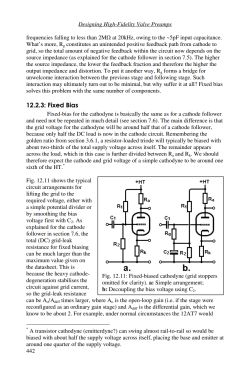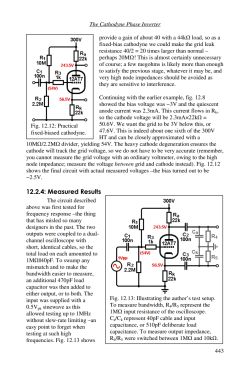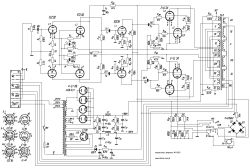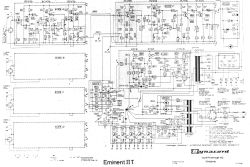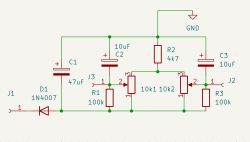Hello everyone!
I come to you with a project that dragged on for me for almost 4 years - a tube amplifier, which was my school of tube electronics. During this time I made a lot of mistakes, learned a lot and today I can say with a clear conscience that "I already know something". 😊
Initially, this was to be a clone of the schematic-based Ampex 2012, but it soon became apparent that I did not yet know at that time how the input pentode behaved. Its gain was too high in this circuit, which caused problems - the original design was designed for low input amplitudes.
The tubes, transformers and components were already bought, so something of my own had to be designed.
There was also hum and not much power per channel. I dealt with the former by:
- ground in a star topology, very carefully done,
- and using a capacitance multiplier instead of a heavy and expensive choke.
As for the power - the problem was trivial: a badly chosen resistance of the negative feedback loop. After correction - the power was back in place.
⸻
What did I add?
- UL/Pentode mode switch - gives you the opportunity to experiment with the character of the sound.
- Input selector
- Switch between tube rectifier (GZ34) and silicon bridge - the circuit completely disconnects the GZ34, so it doesn't run and wear out.
⸻
Technical extras:
I also used quite a few parts from the 3D printer - the largest being the transformer covers.
I've tried to keep the interior aesthetically pleasing in a spatial style - I'm a big fan of spatial assembly and I think it looks and works great.
⸻
Impressions
- Looks? In my opinion - excellent.
- Sound? Even better.
In my opinion, the pentode mode beats the UL by a whisker - it gives more power and a characteristic "tube hoarseness". The sound is further 'compressed' by voltage drops on the GZ34, which adds to the atmosphere, but only when listening in 'full tube' mode.
⸻
Concluding remark
I've recently noticed a slight 50 Hz hum in tube rectifier mode - I suspect my GZ34 is running out (I've had an incident of sparking in the bulb), although it may also be a matter of some sort of ground loop - but not likely, as the sound is typical of mains frequencies.
So on a day-to-day basis I listen on silicon, but I still plan to play around with a "pseudo rectifier tube" - i.e. two diodes + a power resistor.
⸻
Photos:
📸
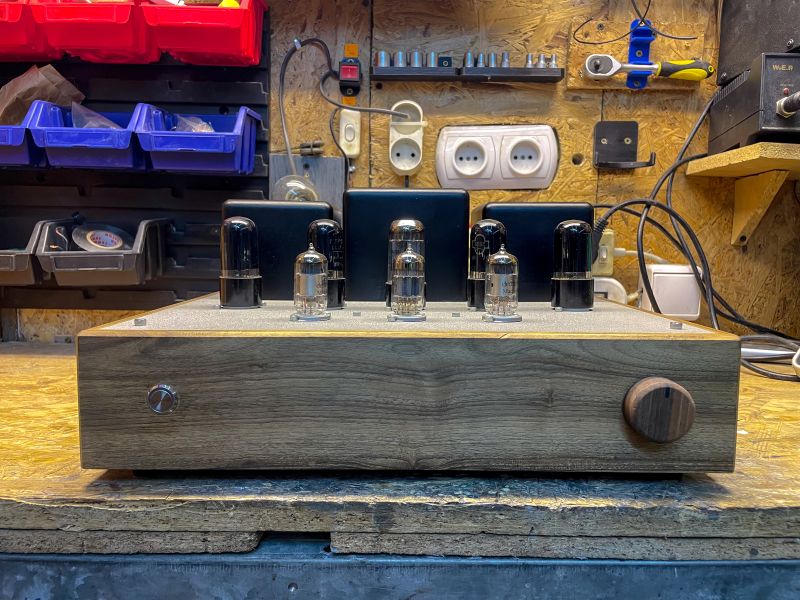 .
.
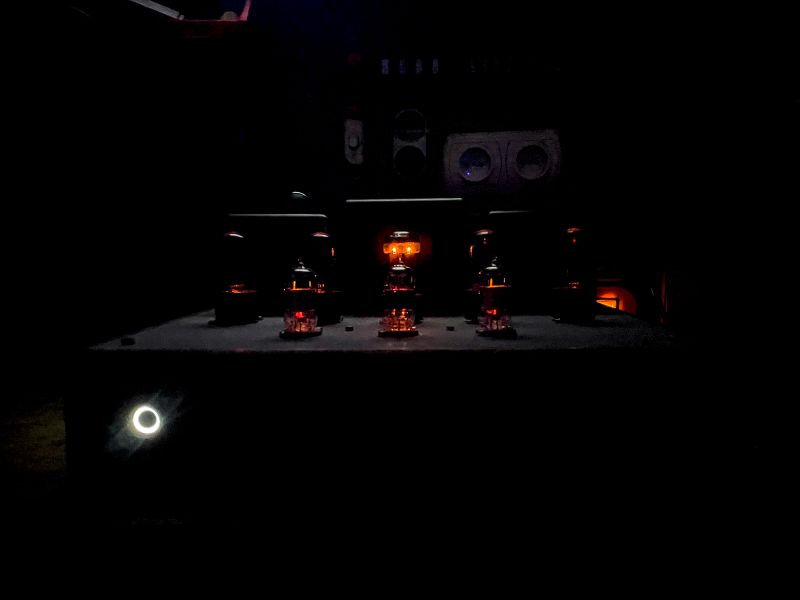 .
.
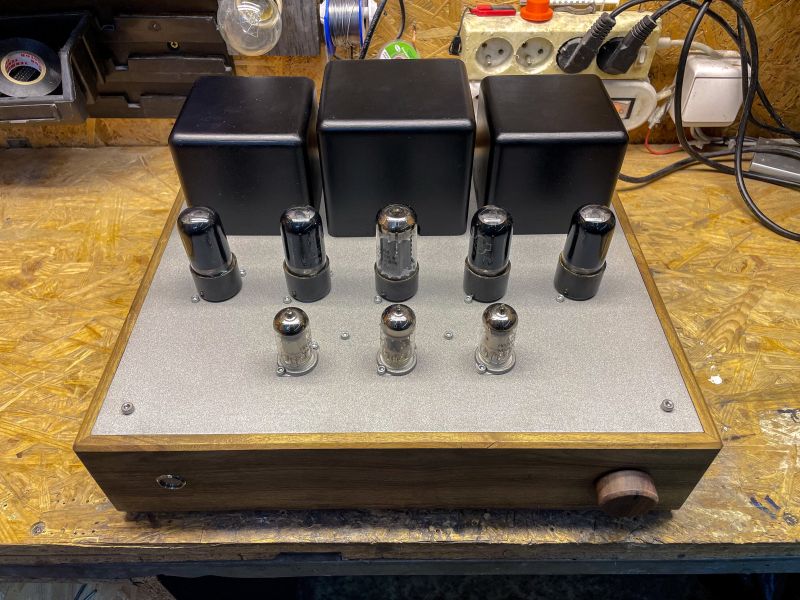 .
.
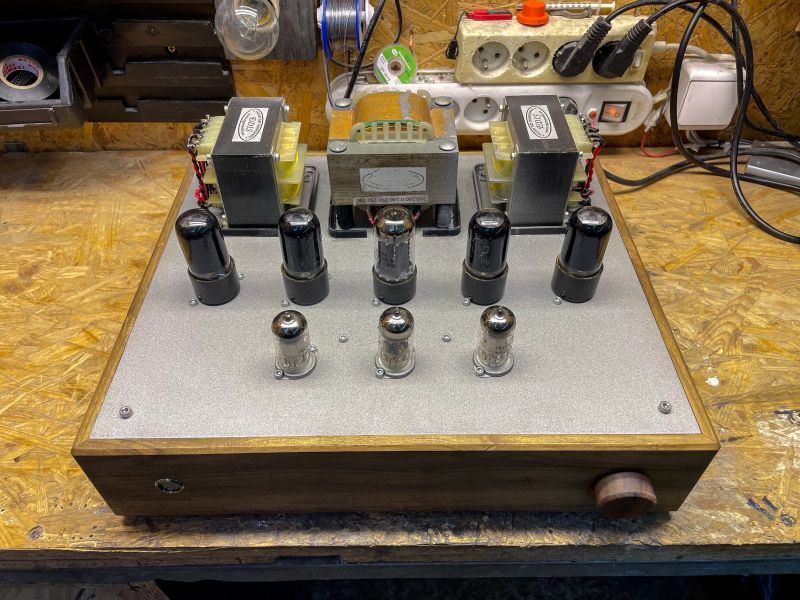 .
.
 .
.
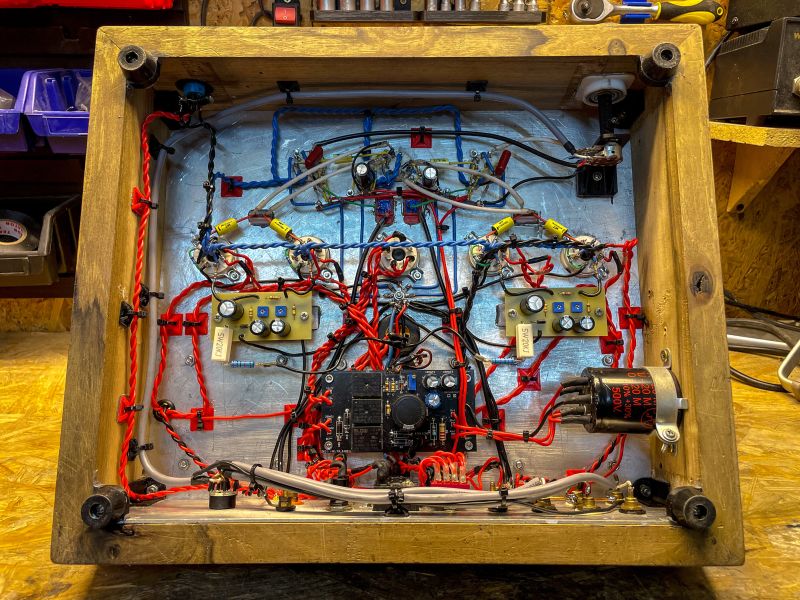 .
.
I come to you with a project that dragged on for me for almost 4 years - a tube amplifier, which was my school of tube electronics. During this time I made a lot of mistakes, learned a lot and today I can say with a clear conscience that "I already know something". 😊
Initially, this was to be a clone of the schematic-based Ampex 2012, but it soon became apparent that I did not yet know at that time how the input pentode behaved. Its gain was too high in this circuit, which caused problems - the original design was designed for low input amplitudes.
The tubes, transformers and components were already bought, so something of my own had to be designed.
There was also hum and not much power per channel. I dealt with the former by:
- ground in a star topology, very carefully done,
- and using a capacitance multiplier instead of a heavy and expensive choke.
As for the power - the problem was trivial: a badly chosen resistance of the negative feedback loop. After correction - the power was back in place.
⸻
What did I add?
- UL/Pentode mode switch - gives you the opportunity to experiment with the character of the sound.
- Input selector
- Switch between tube rectifier (GZ34) and silicon bridge - the circuit completely disconnects the GZ34, so it doesn't run and wear out.
⸻
Technical extras:
I also used quite a few parts from the 3D printer - the largest being the transformer covers.
I've tried to keep the interior aesthetically pleasing in a spatial style - I'm a big fan of spatial assembly and I think it looks and works great.
⸻
Impressions
- Looks? In my opinion - excellent.
- Sound? Even better.
In my opinion, the pentode mode beats the UL by a whisker - it gives more power and a characteristic "tube hoarseness". The sound is further 'compressed' by voltage drops on the GZ34, which adds to the atmosphere, but only when listening in 'full tube' mode.
⸻
Concluding remark
I've recently noticed a slight 50 Hz hum in tube rectifier mode - I suspect my GZ34 is running out (I've had an incident of sparking in the bulb), although it may also be a matter of some sort of ground loop - but not likely, as the sound is typical of mains frequencies.
So on a day-to-day basis I listen on silicon, but I still plan to play around with a "pseudo rectifier tube" - i.e. two diodes + a power resistor.
⸻
Photos:
📸
 .
.
 .
.
 .
.
 .
.
 .
.
 .
.
Cool? Ranking DIY





